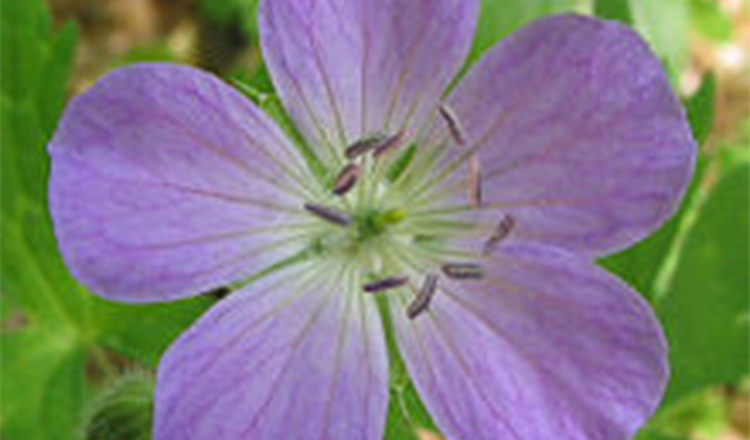Geranium

Geranium is a genus of 422 species of annual, biennial, and perennial plants that are commonly known as geraniums or cranesbills. They are found throughout the temperate regions of the world and the mountains of the tropics, but mostly in the eastern part of the Mediterranean region.
The palmately cleft leaves are broadly circular in form. The flowers have five petals and are coloured white, pink, purple or blue, often with distinctive veining. Geraniums will grow in any soil as long as it is not waterlogged. Propagation is by semiripe cuttings in summer, by seed, or by division in autumn or spring.
Geraniums are eaten by the larvae of some Lepidoptera species including brown-tail, ghost moth, and mouse moth. At least several species of Geranium are gynodioecious.[1][2][3] The species Geranium viscosissimum (sticky geranium) is considered to be protocarnivorous.
The genus name is derived from the Greek γέρανος (géranos) or γερανός (geranós) ‘crane’. The English name ‘cranesbill’ derives from the appearance of the fruit capsule of some of the species. Species in the genus Geranium have a distinctive mechanism for seed dispersal. This consists of a beak-like column which springs open when ripe and casts the seeds some distance. The fruit capsule consists of five cells, each containing one seed, joined to a column produced from the centre of the old flower. The common name ‘cranesbill’ comes from the shape of the unsprung column, which in some species is long and looks like the bill of a crane. However, many species in this genus do not have a long beak-like column.
